Air Conditioning of an Office by Two Fans Simulation
$120.00 Student Discount
- In this project, we have simulated and examined the performance of fan-driven airflow inside an office for HVAC operation, including a computer and four lamps using ANSYS Fluent software.
- Three-dimensional solar chimney modeling was done using Design Modeler software.
- The meshing of the model has been done using ANSYS Meshing software and the element number is 207707.
- The ideal gas equation is opted to capture the changes in the air density and see the buoyant effect due to temperature change.
To Order Your Project or benefit from a CFD consultation, contact our experts via email ([email protected]), online support tab, or WhatsApp at +44 7443 197273.
There are some Free Products to check our service quality.
If you want the training video in another language instead of English, ask it via [email protected] after you buy the product.
Description
Air Conditioning of an Office by Two Fans, ANSYS Fluent CFD Simulation Tutorial
The present study simulated the performance of fan-driven airflow inside an office for HVAC operation, including 1 computer and 4 lamps. The computer is made of plastic and is considered a heat source equivalent to 700 W/m3, while each lamp material is glass and has a heat source equal to 2500 W/m3.
We install two fans on the upper part of two office walls to transfer airflow into the office. We also assumed that the doors and windows of the office have convection heat transfer by ambient air.
Methodology
The present 3-D model was designed by Design Modeler software. The geometry consists of a cubic space called the office for HVAC operation, composed of several components, including people, lamps, computers, desks, and so on.
An unstructured mesh was performed using ANSYS Meshing software. Meshing has been done more accurately for the internal components of the office. In this mesh, the element number is equal to 547820.
Since, in the present model, the airflow is blown by the fans at a rapid rate, the ideal gas model is used to define the air because the airflow is compressible during the process.
Incompressible flows, the density is not a constant value and varies with pressure and temperature, which is calculated by the relation of the ideal gas law.
Conclusion
The problem goal is to investigate the effect of blown airflow on the components and people in the office. Also, we simulate the influence of airflow on the heat sources applied in the model. The velocity and thermal performance of the 2 fans are easily visible from related contours and vectors.
Every fan has a polynomial porous jump identified in the Fluent software. Also, considering a few heat sources, the HVAC performance of these two fans for this large office seems reasonable.
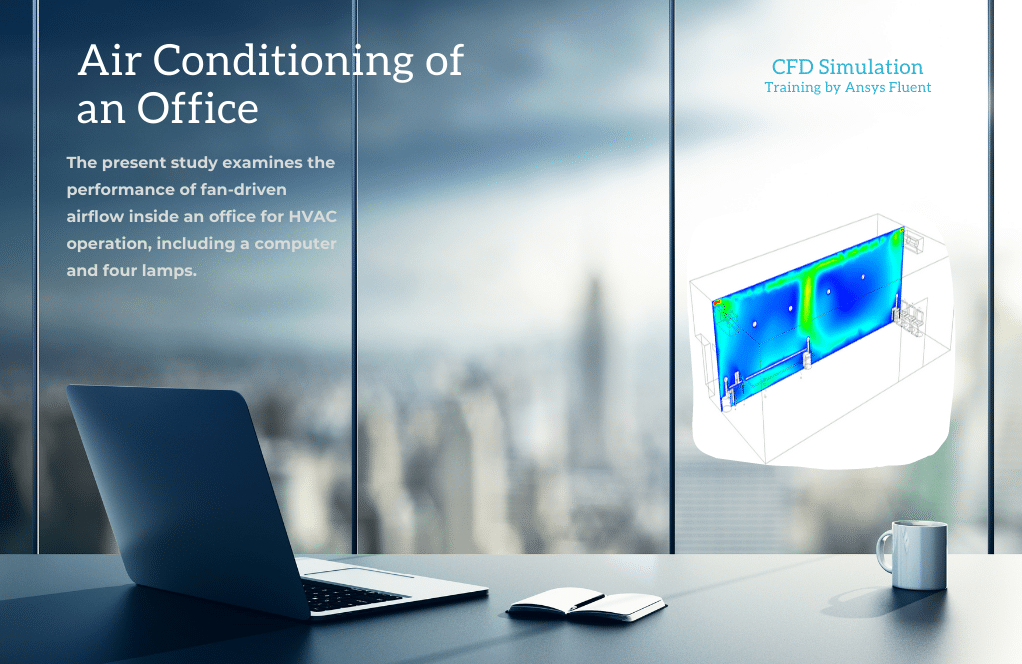
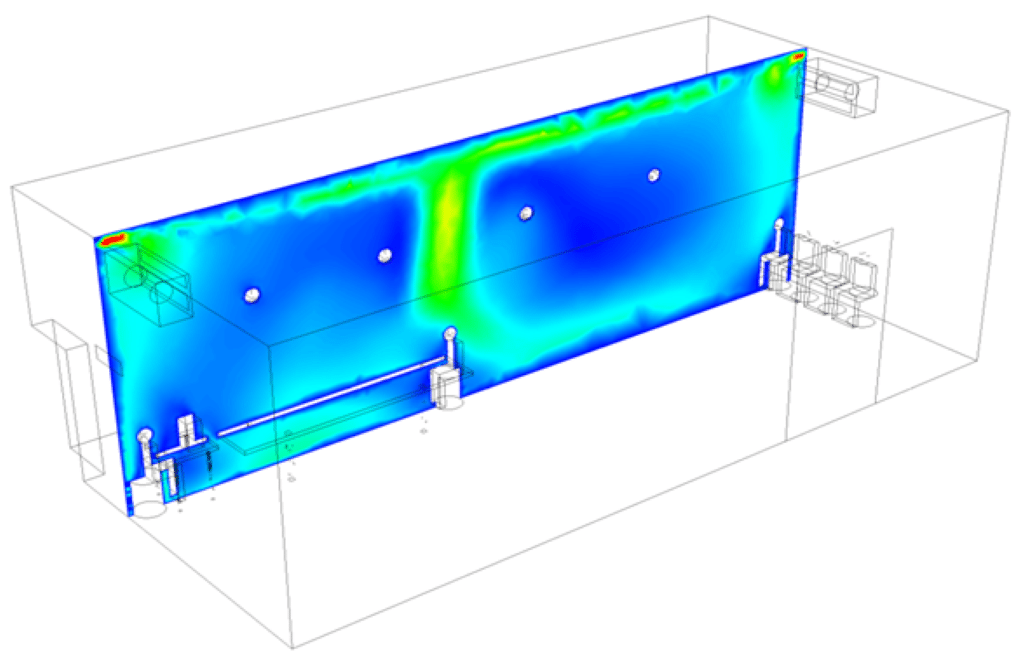
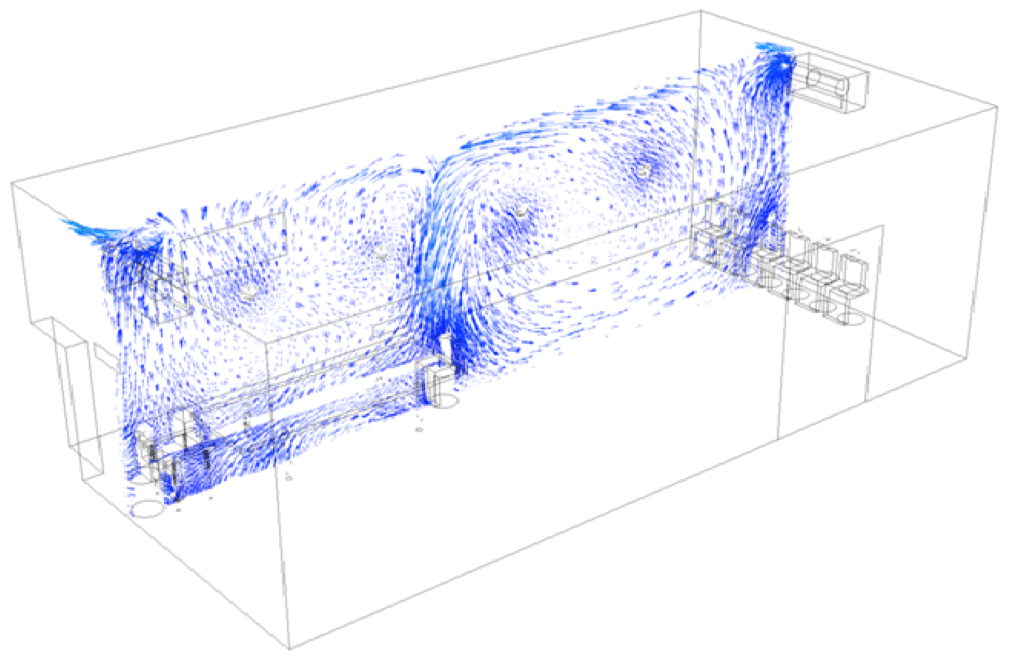

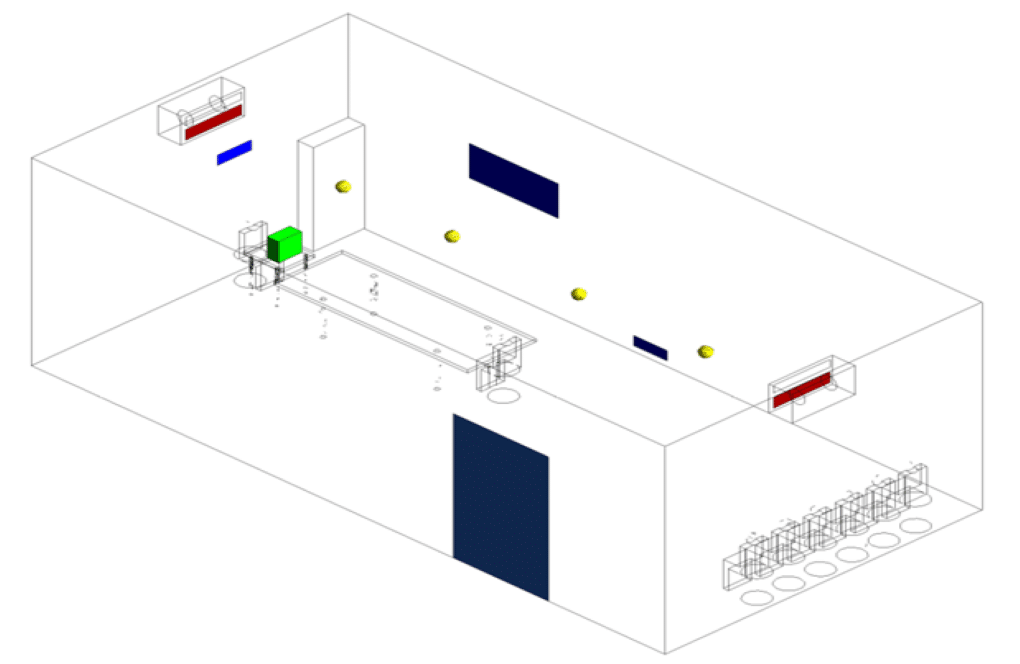
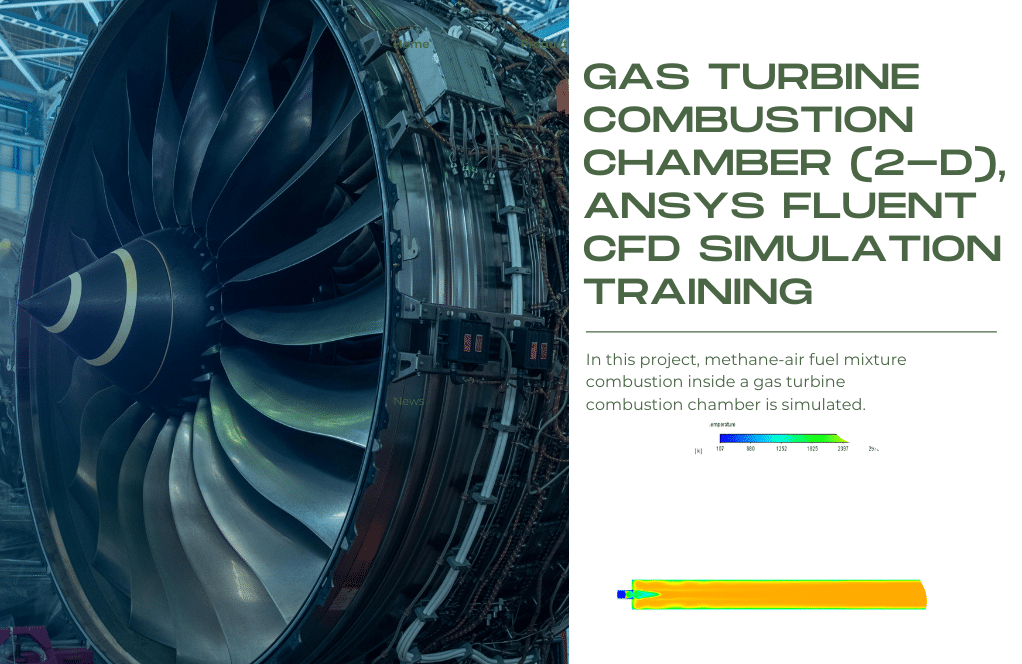
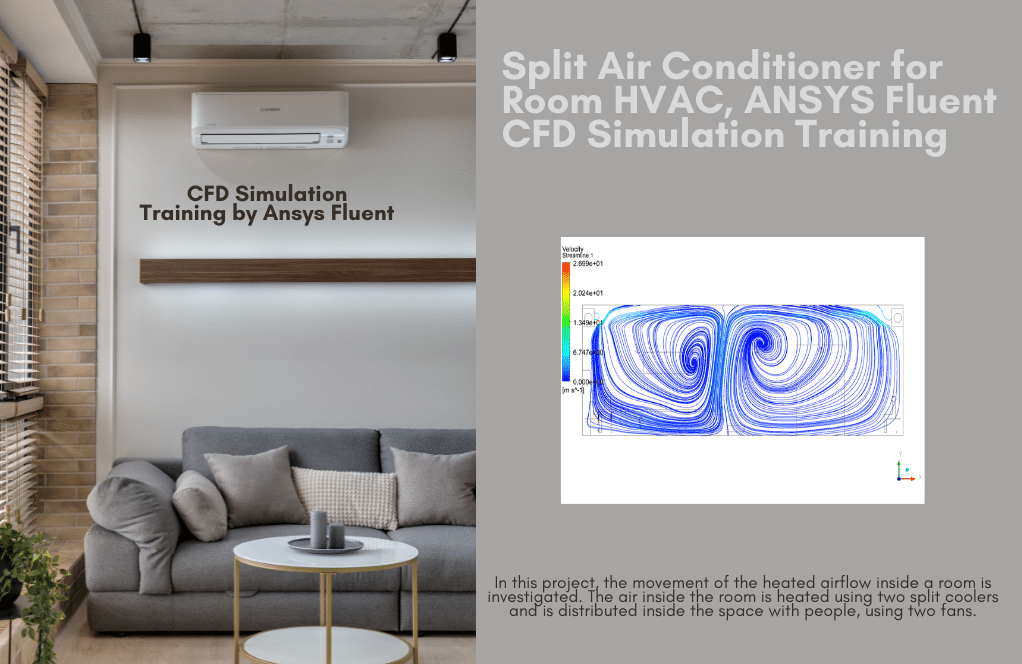
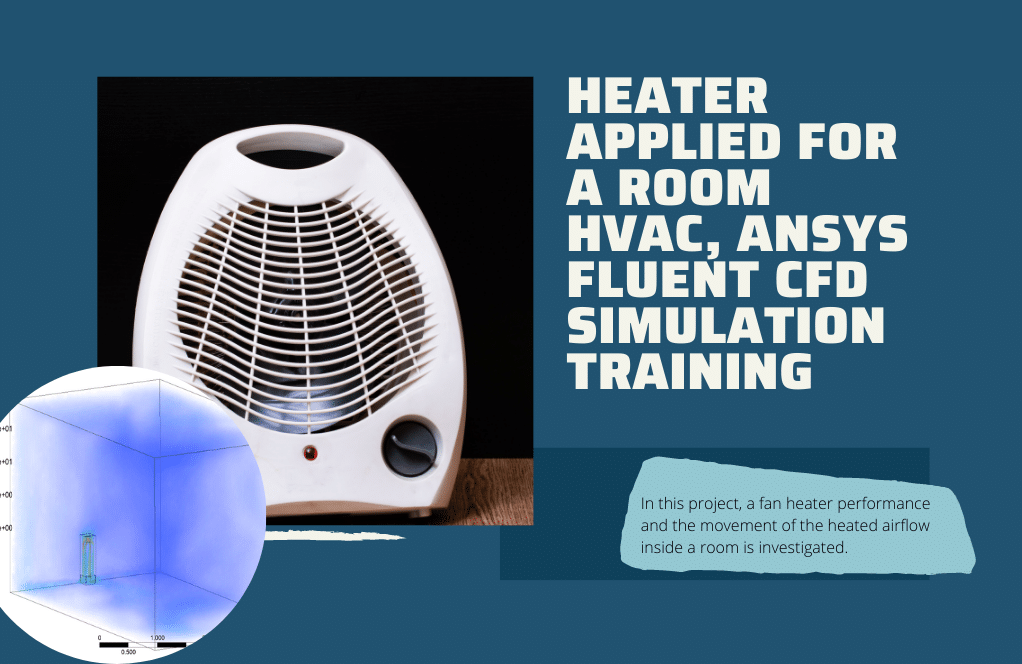
Dr. Bart Gulgowski –
excellent
Marcellus Goyette –
Why did you choose these specific software tools for your simulations?
MR CFD Support –
Design Modeler and ANSYS Meshing are reliable tools for creating high-quality models and precise meshes, which are necessary for accurate CFD simulations.
Kaleigh Johnston –
I have a specific simulation in mind. Can you accommodate my request?
MR CFD Support –
Absolutely! We are open to contributions and would be happy to create a custom simulation for you. Please share more details about it
Prof. Blake Herzog DDS –
The tutorial was overwhelmingly informative! The air and thermal distribution across the office were represented so clearly it felt as though I was watching the actual airflow. The fans appeared to be quite effectively placed – seeing those thermal performance and velocity vectors was very insightful. Thanks for such a practical demonstration of fan placement and heat source influence in an office setting!
MR CFD Support –
We appreciate your kind words and are thrilled to hear you found the tutorial informative and practical! It’s great to know that the demonstration provided clear insights into the airflow dynamics and thermal management within an office environment. We always strive to provide useful, real-world applications in our simulations. Thank you for choosing our tutorial and for taking the time to give us feedback!
America Goyette –
This tutorial was incredibly detailed and helpful! I could clearly see how the position of the fans impacts the air circulation and temperature distribution in the office. The added complexity of simulating various heat sources, like the computer and lamps, made the results even more valuable. Great job on setting realistic boundary conditions to mimic the convection heat transfer at doors and windows.
MR CFD Support –
We’re thrilled to hear that the tutorial was beneficial to you! It’s great to know that the details of fan placement, heat source simulation, and boundary conditions provided clear insights. Your feedback is highly appreciated. Thanks for taking the time to share your experience with our product!
Edna Baumbach II –
This tutorial really helped clear my doubts about setting up fans in a complex HVAC simulation. The velocity vectors and thermal performance following the fan installation were particularly helpful. I could optimize the office’s airflow effortlessly!
MR CFD Support –
Thank you for your positive feedback! We’re so pleased to hear that our tutorial provided clarity and helped you optimize your HVAC system. If you have any more questions or need further assistance in your simulation endeavors, feel free to reach out.
Prof. Zella Hoppe –
Just finished going through the Air Conditioning of an Office by Two Fans tutorial—very informative! Amazed at how the simulation covered several components and even heat sources from items like lamps and a computer. The HVAC performance analysis was quite detailed.
MR CFD Support –
Thank you for such a positive review! We’re delighted to hear our tutorial was informative and you are pleased with the HVAC performance analysis. We strive to provide comprehensive and realistic simulations for a better understanding of the CFD process.
Mrs. Savanah Lindgren –
Thank you for this comprehensive review! Watching the velocity contours from the simulation was educational, really showed the capability of the fans for air distribution.
MR CFD Support –
We’re thrilled to hear that our tutorial on office air conditioning simulation provided you with valuable insights! Our goal is always to deliver educational content that is both practical and informative. Thank you for acknowledging the depth of our simulation and for taking the time to review our product. We look forward to providing you with more resources that can enhance your understanding of CFD applications.
Mrs. Ora Marks V –
The tutorial for Air Conditioning of an Office simulation was easy to follow, and I especially liked how you presented the effect of the fans on airflow and temperature distribution. Will you also be covering how to set different operating conditions based on seasonal changes in future tutorials?
MR CFD Support –
Thank you for your kind words and valuable suggestion. Regarding adapting to seasonal changes, we are considering preparing tutorials that focus on simulating different scenarios, including variations in the external temperature and humidity levels associated with different seasons. Keep an eye on our upcoming releases for this advanced feature.
Kris Reichert –
After using these fans, was the airflow sufficient to reach all areas of the office, or were there zones with stagnation or insufficient circulation?
MR CFD Support –
In the simulation, airflow patterns were closely examined to ensure the whole office was adequately covered. Streamlines and velocity contours indicated that the fans were effective, with good distribution across the space and minimal areas of stagnation or insufficient circulation. Airflow did reach all zones within the office.
Elinor Kertzmann IV –
This product was incredibly helpful in visualizing the airflow and temperature distribution caused by the office fans. It was impressive to see the flow patterns directing around the heat sources such as the lamps and computer. Thanks!
MR CFD Support –
We really appreciate your positive feedback on our office air conditioning simulation tutorial. It’s great to hear that our product was able to effectively assist you in understanding the airflow dynamics within an office environment. Thank you for choosing our CFD learning products!
Roberta Sipes –
I’m impressed by the detail in your Room Air Conditioning CFD Simulation!
Ms. Audra Kling –
The simulation and visualization of the fans’ effect on air conditioning are exceptional. It’s incredible how accurately the flow distribution and thermal impact are displayed. Clearly, the polynomial porous jump settings for the fans and detailed modeling of heat sources paid off. Great job to the MR CFD team for this insightful tutorial!
MR CFD Support –
We are delighted to know that you found the tutorial insightful and the visualizations accurate. It’s our goal to provide detailed and precise simulations that are helpful for understanding the HVAC dynamics in an office setting. We appreciate your compliments and look forward to delivering more useful content!
Mitchel Labadie –
I’m really impressed with how well the fans distribute air in the office in the simulation. The temperature control seems to be very effective even with the heat sources considered.
MR CFD Support –
Thank you for your positive feedback! We’re glad to hear that the simulation provided a clear representation of the air distribution and effective temperature control within the office environment. We strive to make our simulations accurate and informative.
Stanley Marquardt –
I appreciate the depth of this CFD simulation for office air conditioning. The attention to detail, from embracing the heat generated by computers and lamps to modeling convection from doors and windows, reiterates the commitment to precision and real-world applicability of these simulations. Well done!
MR CFD Support –
Thank you for your positive feedback! We’re thrilled to hear that you recognize the precision and real-world applicability of our CFD simulations. Our goal is always to deliver comprehensive studies that aid in understanding complex systems. We’re glad you’re satisfied with the simulation’s depth and detail!
Christopher King –
I’m extremely impressed by the detail accounted for in the office air conditioning CFD simulation. It seems quite comprehensive. Could you let me know what specific software enhancements or meshing strategies were used to better capture the effect of small heat sources, like the lamps and computer, on the surrounding air flow?
MR CFD Support –
In this simulation, special attention was given to mesh refinement around the smaller heat sources like lamps and computer to ensure accurate thermal gradients and airflow interactions are captured. ANSYS Meshing software allowed for more detailed and accurate meshing in these crucial areas, improving the quality of results for temperature and airflow distribution.